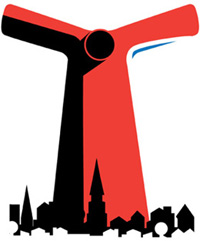Today’s P&C editorial: “Go green with cruise ships”- “…Juneau…Seattle, Vancouver, San Francisco, San Diego and Los Angeles have added shore-side power. Brooklyn is coming online this year.”

Go green with cruise ships, Post and Courier, February 12, 2012, editorial.
In an effort to enhance the port and its reputation as a first-class place to do business, the State Ports Authority plans to build a new terminal with dual rail access in North Charleston, move and upgrade the passenger terminal and help port trucks switch to cleaner fuel.
The port could further improve its operations by installing shore-side power for cruise ships calling here.
The trend to cleaner power began in 2001 in Juneau. Since then, Seattle, Vancouver, San Francisco, San Diego and Los Angeles have added shore-side power. Brooklyn is coming online this year.
Instead of idling the engines to keep lights on and air conditioning working while they are docked, shore-side power allows ships to hook up to the equivalent of a large electrical outlet and turn off the engines. That means less unpleasant air emissions.
Of course, it also means expenses both for the port and the ship owner to add necessary equipment. The Port of San Francisco spent $5.2 million on its system. And while it takes $1 million of equipment for a cruise ship, officials say cruise lines will save in the long run. Power supplied by diesel runs around $18,000 for a 10-hour call while the new shore-side power averages around $16,000 for the same amount of time.
Other ports have found creative ways to finance the improvements. For example, the corporation that manages Brooklyn’s cruise terminals will subsidize some of the cost of the power, as will the New York Power Authority. The remainder of the cost will be paid by the Carnival Corp., whose ships utilize the Brooklyn homeport. Carnival (with cruises originating in Charleston also) will spend millions to retrofit its ships that use the Brooklyn port.
The Port of San Francisco is working with the San Francisco Public Utilities Commission to price shore-side power at a rate that’s cheaper than using onboard engines while docked.
California regulations require phased-in shore-side power beginning 2014, so ports are reaching out to cruise lines to make them aware of possible grant funding available for retrofitting their ships.
The shore-side power focus has been primarily on cruise ships, which idle for hours as passengers debark, visit a port and return to the ship. The diesel burns the whole time.
And in Charleston, where the cruise industry is already a source of discord, shore-side power could be viewed as an olive branch — a way for the SPA to address one of residents’ concerns about the size and number of cruise ships and the pollution they cause.
The timing is also convenient. The SPA is not yet finished its terminal design plans. Adding shore-side power up front while construction is under way instead of retrofitting later makes sense.
The Navy has used shore-side power for years. Why shouldn’t Charleston?
Adding shore-side power will require teamwork. SCE&G needs to be part of the plan, as do the SPA and its biggest clients.
Shore-side power is quiet, clean and odor-free.
It is clearly the right thing to do for residents and passengers alike.
